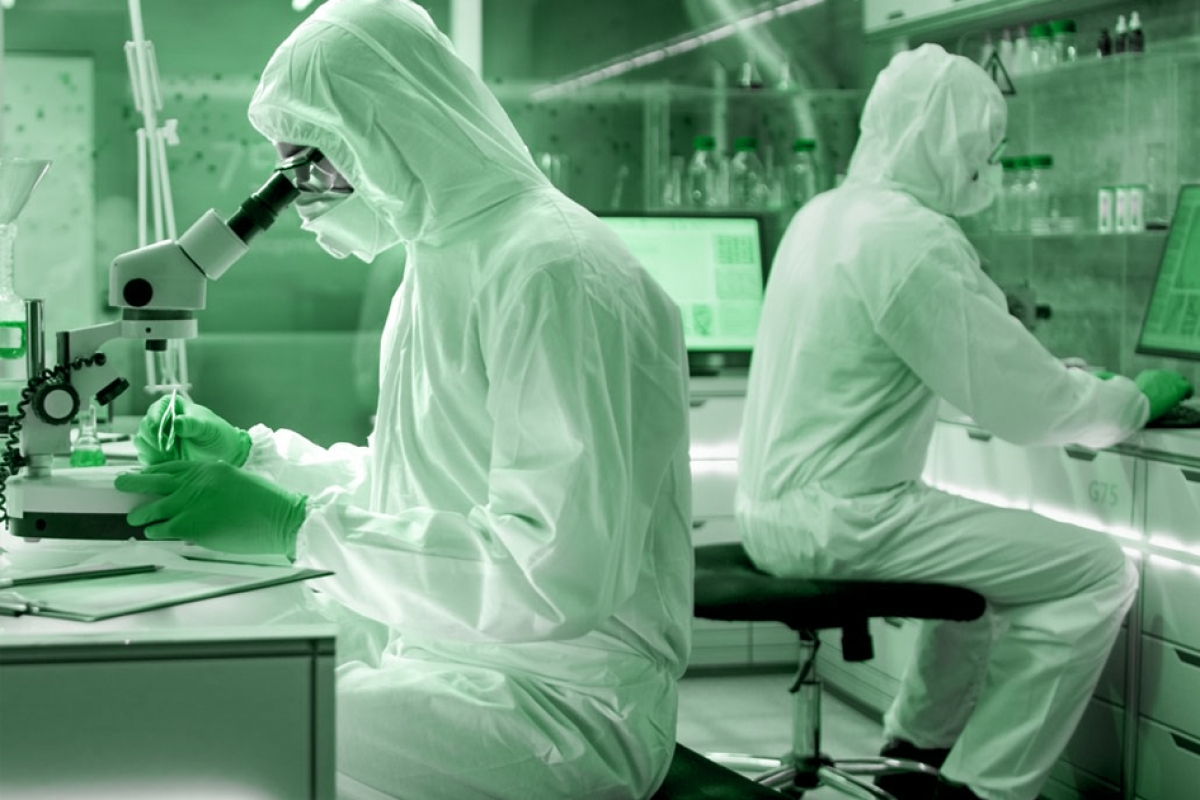
Common Cleanroom Contaminants
Some of the most common cleanroom contamination include solid dust, liquid, bacteria, fungus, human skin cells and hair, trace moisture, spills and leaks, cosmetics, perfumes, lint, fibers, and more. The vast majority of cleanroom contamination comes from those that work within it.
Cleanroom design and construction address contamination in a few ways:
- Preventing particle entry from air filtration systems or air gaps
- Purging and filtering room air throughout the production process
- Providing parallel stages and adjacent rooms of differing cleanliness eg; gowning or garbing room for dressing and donning, cascaded anter and buffer rooms for preparation and storage
- Isolated clean spaces and air pressure within laminar flow hoods for isolated procedures such as sterile compounding or hazardous chemicals
Best Practices for Entrance Rooms, Garment Rooms, Ante-rooms
- The section leading into a cleanroom should be at least as clean as the room itself
- All personal items such as keys, watches, rings, matches, lighters and cigarettes should be stored in the personal locker outside the
- gowning room.
- Place a sticky mat at the entrance of a gowning room with a waste receptacle nearby for discarding saturated sticky tack layers
- Watches, jewelry, and any clothing should be stored on the “dirty” side of the gowning room.
- Don’t smoke 30 minutes before entering.
- Hand Washing Best Practices for Cleanrooms
- While wearing gloves in a cleanroom is standard practice, those who wear gloves are less likely to wash or clean their hands prior to donning gloves. Poor hand hygiene increase the vulnerability of cleanrooms to bacteria and potential transfer or introduction of microbes such as viruses and fungus.
How to Wash Hands with Soap & Water in a Cleanroom
- Wet hands first with water, then apply soap
- Apply the manufacturer recommended amount of soap
- Use of paper towels is prohibited. Use HEPA equipped hand dryers
- Scrub hands for at least 15 seconds, and cover all hand surfaces
- Avoid using hot water, which may increase the risk of dermatitis
- Do not add soap to a partially empty soap dispenser
- Get input from employees about any fragrance or irritation issues
- Never touch a clean garment of clean material before thorough hand washing
- For EPA (electrostatic protected areas) cleanrooms, apply an ESD lotion, as standard lotions may compromise the effectiveness of ESD wristbands and monitoring stations
- Keep natural fingernails less than 1/4″ long
- Monitor the volume of use for alcohol based hand rubs
Resources & Articles
CLIN ® "Resources" page is for individuals/companies seeking information on cleanrooms and controlled environments. Find Cleanroom News, Discussion Forums, Cleanroom Cleaning Recommendations, Cleanroom Terminology, Cleanroom Directory, and more.
Content Disclaimer
Information are contributed by/from different websites and all credit goes to its respective owners/writers/websites/companies and etc, and while we endeavour to keep the information up to date and correct, we make no representations or warranties of any kind, express or implied, about the completeness, accuracy, reliability, suitability or availability with respect to the website or the information, products, services, or related graphics contained on the website for any purpose. Any reliance you place on such information is therefore strictly at your own risk.
In no event will we be liable for any loss or damage including without limitation, indirect or consequential loss or damage, or any loss or damage whatsoever arising from loss of data or profits arising out of, or in connection with, the use of this website.
Through this website you are able to link to other websites which are not under the control of respective owners/writers/websites/companies and etc. We have no control over the nature, content and availability of those sites. The inclusion of any links does not necessarily imply a recommendation or endorse the views expressed within them.
Every effort is made to keep the website up and running smoothly. However, CLIN ® takes no responsibility for, and will not be liable for, the website being temporarily unavailable due to technical issues beyond our control.











